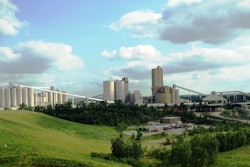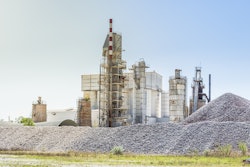
Language and linguistics have always been fascinating to me. They are like a blueprint where one plots out plans to convey a message of a project. The plans are interpreted, understood, and work continues. Stephen King even called reading a sort of magic (because of course he did) where the author’s ideas can transport from decades prior to your imagination tomorrow. It’s a puzzle where you have the pieces, all you have to do is put them together in the right order. Sometimes, I’ll find the use of a concept, a small puzzle piece, that delays the whole project.
Often, I’ll read an article that reads something along the lines of “this construction will reduce embodied carbon emissions” by a number of tons. With the concrete industry working to do just that on a global scale, this sounds great. But it’s not right, right? Regardless of how “green” your construction plans are, carbon emissions will be put out. You can’t (yet) reduce emissions by building something, you can minimize the project’s carbon footprint – but the word used was “reduce.”
So, I asked for help and contacted Rick Bohan, Portland Cement Association’s Senior Vice President, Sustainability. He says that these terms are often used interchangeably but they’re not synonymous.
He explains, “Reduced carbon emissions refer to the embodied carbon content of a material. Avoided carbon emissions, on the other hand, refer to the carbon emissions avoided through the use of the material. Reduced emissions reflect today’s impact while avoided emissions take into account tomorrow’s impact. Currently, if you increase production of a beneficial product like concrete, your emissions footprint also grows. MIT’s Concrete Sustainability Hub has ongoing research to show that approach is not accurate because avoided emissions aren’t properly accounted for. That’s why they’re modeling Scope III emissions and avoided emissions.
An example:
A concrete pavement has an embodied carbon content from the materials used; there’s energy consumed during the manufacturing and transportation of concrete. Those embodied carbon emissions are measured and reported in an Environmental Product Declaration. Lower carbon concretes show carbon reductions.
That same concrete pavement also avoids emissions. The stiffness of the pavement means vehicles get better mileage so fewer car and truck emissions. The durability and longevity of the pavement means less maintenance so fewer emissions from those repair activities and fewer emissions from cars and trucks needlessly idling because of construction delays. Concrete pavements also avoid emissions through carbon uptake inherent in carbonation of concrete. While difficult to measure, avoided emissions are real.”
With the amount of concrete being placed on a yearly basis, accounting for the impact of potential carbon emissions for your current job may have in its lifetime is very thought provoking. The driveway you just placed may need a bit of maintenance in a few year’s time. The highway you build next year will likely remain for decades or more. Your next building’s foundation will likely hold up after renovation after renovation.
What other industry can say they have such a potential impact?
Thank you for reading. Enjoy this issue.




![Adobe Stock 350182902 1 6759c43d679ca[1]](https://img.forconstructionpros.com/files/base/acbm/fcp/image/2025/02/AdobeStock_350182902__1_.6759c43d679ca_1_.67b78c75671e9.png?auto=format%2Ccompress&fit=crop&h=100&q=70&w=100)







![Adobe Stock 350182902 1 6759c43d679ca[1]](https://img.forconstructionpros.com/files/base/acbm/fcp/image/2025/02/AdobeStock_350182902__1_.6759c43d679ca_1_.67b78c75671e9.png?ar=16%3A9&auto=format%2Ccompress&fit=crop&h=135&q=70&w=240)







